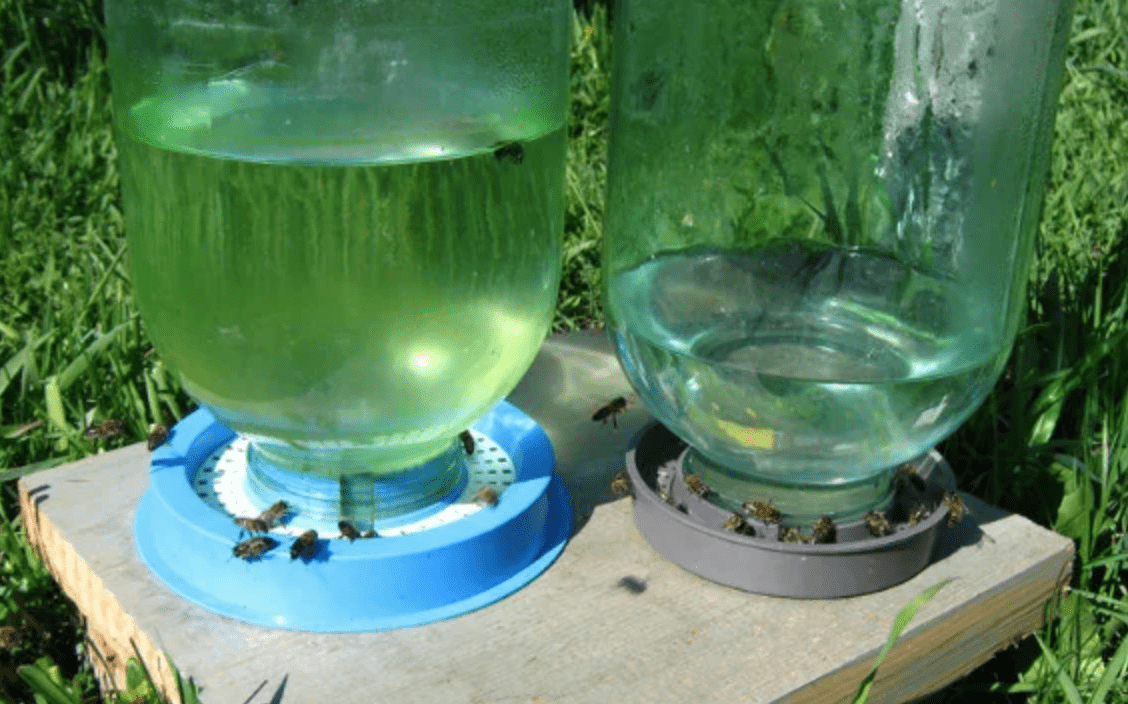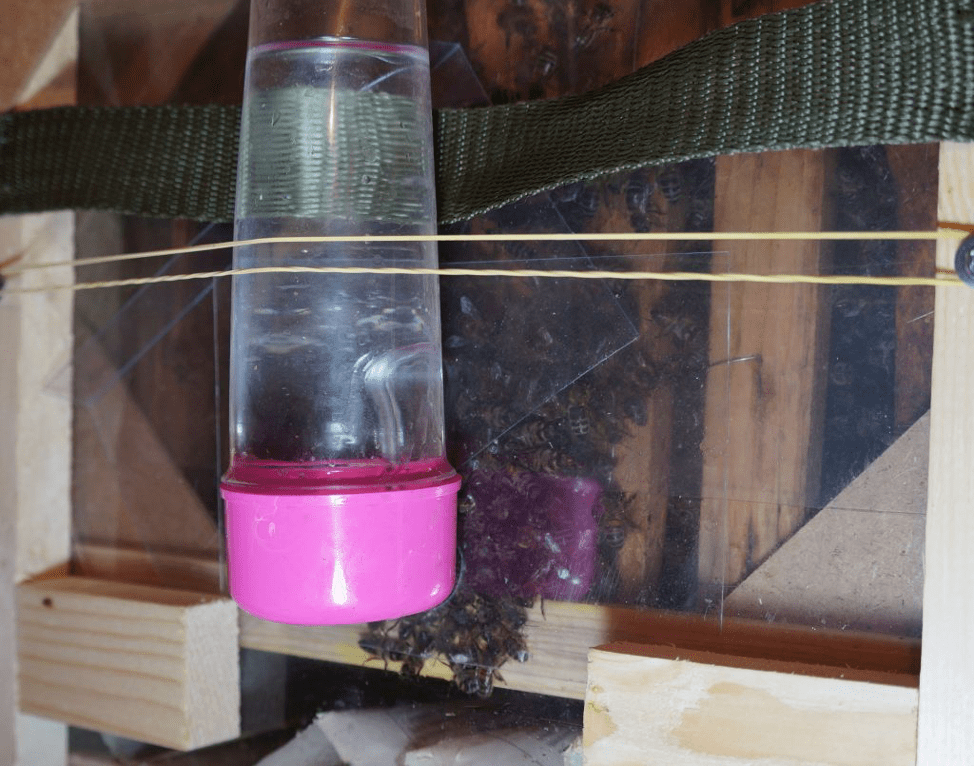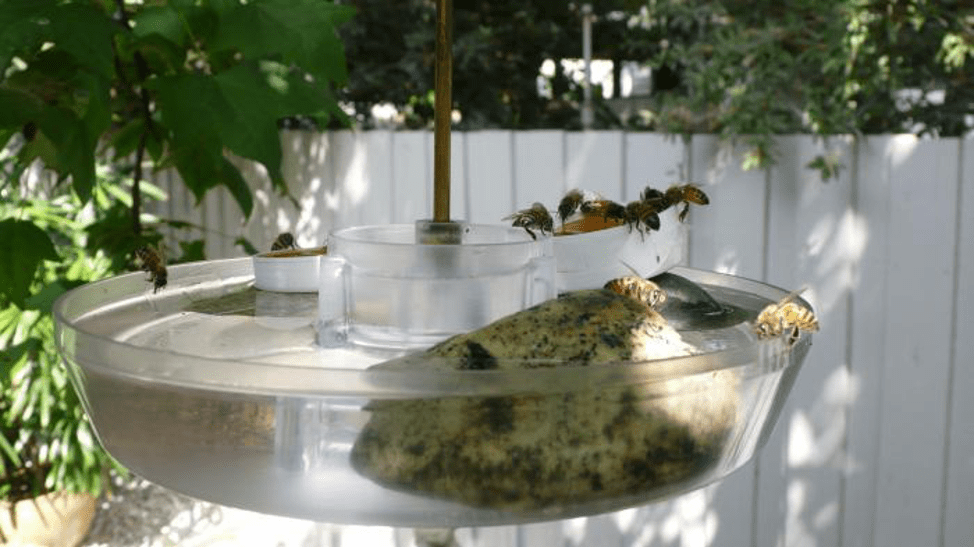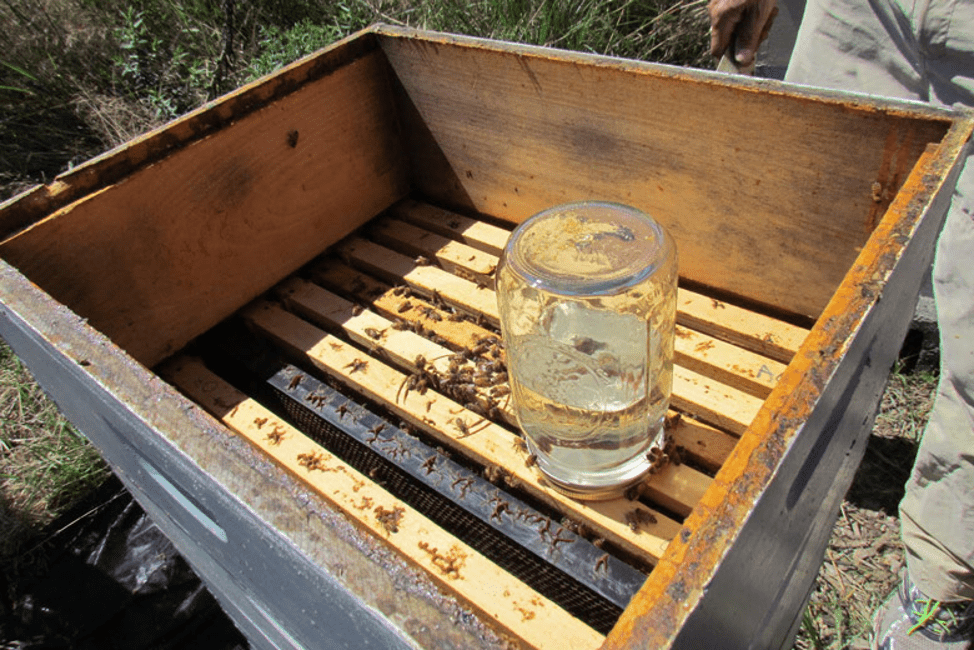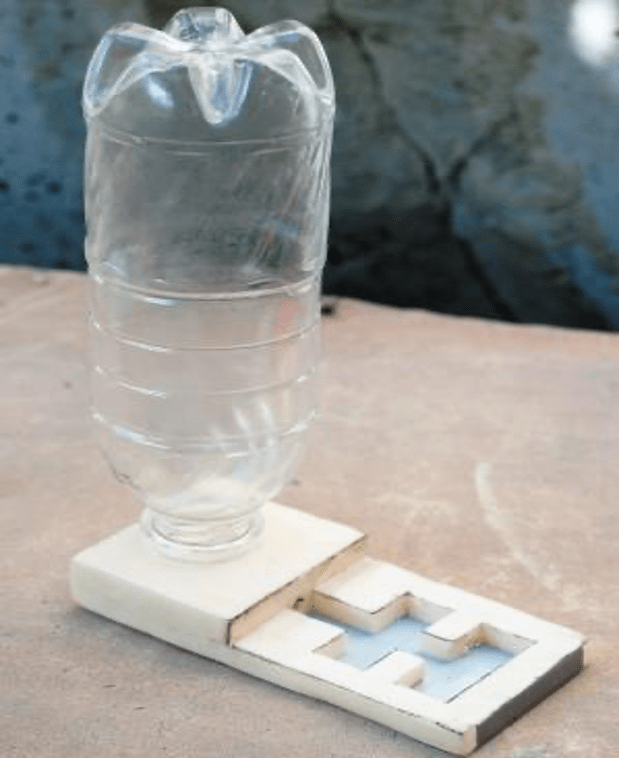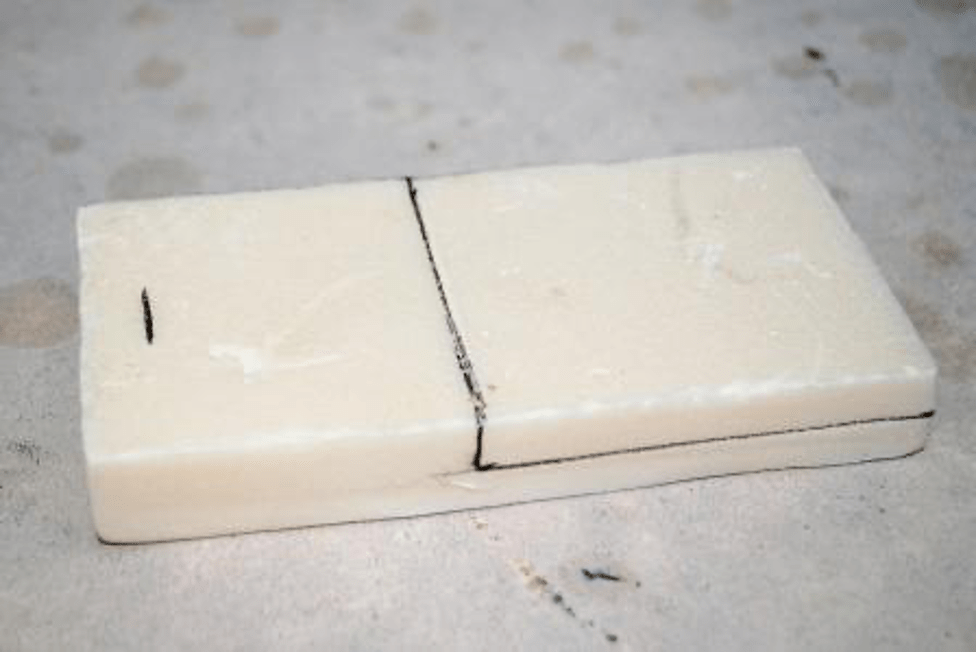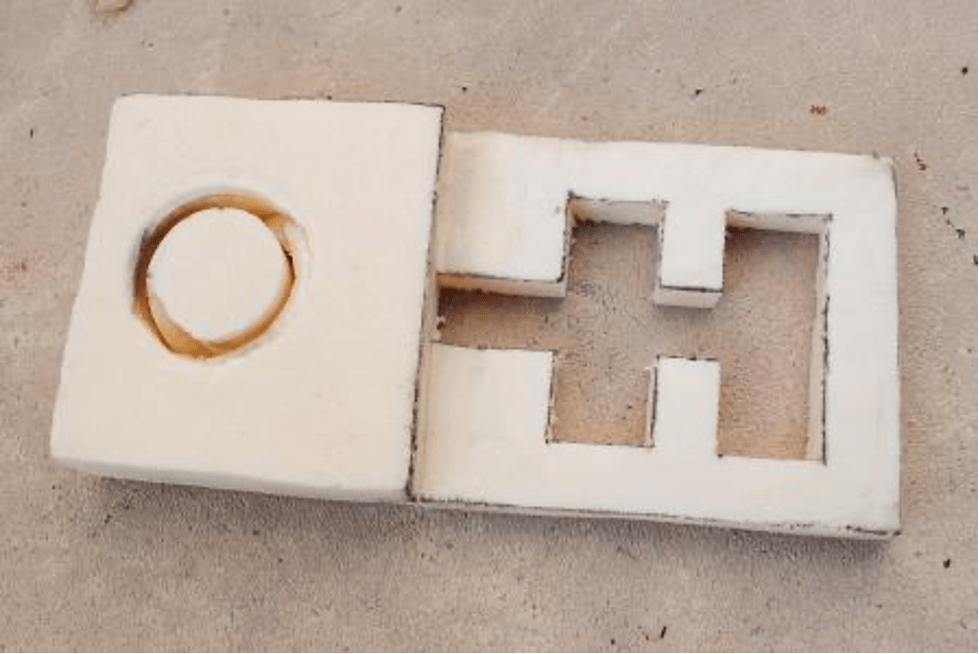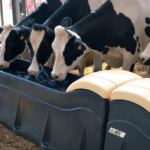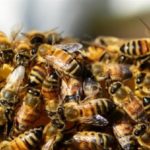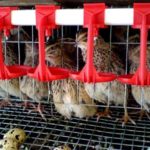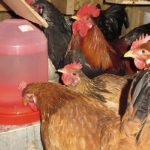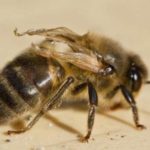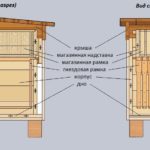All living things need sufficient food and water, insects are no exception. Novice beekeepers often do not think about the need to install additional tanks. You can make suitable drinking bowls for bees with your own hands. For beginning beekeepers with a small number of hives, simple devices are suitable. It is important to study the instructions and recommendations of experienced beekeepers in advance.
What is it for?
A drinking bowl is a simple mechanism, but mandatory for breeding bee families.Several devices will ensure the required drinking regime and prevent the death of insects. Features that a novice beekeeper needs to consider:
- bees are not able to float on water, like some other insects (including, they cannot swim);
- it is important to eliminate the danger - the presence of a reservoir will not protect insects, many die during watering;
- you can buy store-bought devices or make them at home - there is no difference.
Attention! It is necessary to correctly calculate the number of drinkers and water consumption. One bee family needs 30 liters of clean water for the honey collection season. The fluid will need to be changed promptly.
Professional drinking bowls differ from homemade ones - details in the video.
Varieties and types
Beekeepers have developed different types of drinkers, each of which has advantages and disadvantages, features and nuances of use. A beginner should read the description of the devices in advance. They use winter, spring, vacuum and heated mechanisms. Mandatory requirements:
- containers are placed in the apiary before the first summer of insects;
- unimpeded access to water must be maintained;
- the liquid should not dry out in the container;
- suitable places - constant shade, absence of wind and direct sunlight;
- It is necessary to regularly check the temperature - the water should not get too hot or cold.
Caring for the devices is simple - parts can be removed and washed. In some cases, disinfection, repair or replacement of elements may be required.
Winter
The behavior of insects changes depending on the season, so a separate type of water container is installed for each period. In the cold months, drinking bowls are used with some nuances:
- installed inside bee houses;
- Vacuum options are more suitable;
- store-bought and “home” devices are suitable;
- the mechanism is fixed to the tap hole, a ring is fixed on the outside, where a plastic bottle is installed.
Attention! The water must be changed periodically and the temperature checked - it is unacceptable to feed insects with supercooled liquid. Less volume is required than in summer.
Spring
When the honey harvest season begins and the bees wake up, you need to take care of replacing winter drinkers. Stages of the beekeeper's actions:
- free the entrance from the structure so as not to block the entrance to the bee house;
- external containers can be constructed using additional boards;
- before installation, you need to cut small grooves on each;
- secure the elements in such a way that water gradually flows from a large bottle.
Spring drinking bowls are assembled from scrap materials. The devices are installed close to the hives; water should flow into the grooves by drip.
Heated
Additional heating is often installed on spring drinkers. Various devices are used as a heating element, for example, from an aquarium. This part is different in that it does not bring the liquid to a boil, but only heats it up.
Vacuum
These options are used more often than others. The main advantage of the device is that the beekeeper does not need to open the hive or drinking bowl to check the water or replenish supplies. Mechanism features:
- located on the outside of the bee house, more often - separately from it;
- You can control how much water is left and whether there is any infection without opening the drinking bowl;
- the liquid is accessible to insects day and night;
- easy to make yourself.
Attention! Such drinking bowls are installed in the spring and changed throughout the honey collection season. Use several pieces at the same time - nearby or in different places.
Features of making a drinking bowl for bees
To make suitable drinking bowls for bee families yourself, you need to study the recommendations of beekeepers - the instructions are simple, different materials will do.
Drawings and dimensions
In order to make a drinking bowl, you do not need complex drawings - the devices are simple. The sizes are determined based on the needs and number of bee families. The following guidelines are used:
- after waking up in the spring - consumption of 45 ml per day per family;
- in the summer months and during the honey harvest period - no less than 300 ml;
- August and the end of summer - about 100 ml;
- from the beginning of autumn - no more than 30 ml.
In addition, the sizes of available containers (bottles, cans, other available options) are taken into account.
Required tools and materials
The list depends on what type of sippy cup the beekeeper has chosen. For example, for a device with a container made of a plastic bottle that can be installed inside a bee house, you need to prepare the following:
- plastic bottle (volume depends on the size of the bee colony and the required deadline);
- a wooden board or piece of foam material (the length of the hive, strong enough to hold the bottles);
- auxiliary materials (nails, hammer, knife, pencil, ruler and tape).
In addition, simplified designs can be used. For example, in the summer, you can install rubber tires cut in half on the territory.
Attention! Bees descend to the water along the walls of the tires, but additionally it is necessary to place small rafts (for example, made of polystyrene foam or pieces of wood that will not sink). Insects cannot float on the surface of the water, so support is needed.
How to assemble a drinking bowl is described in the following video.
Assembly
Prepared materials and tools are placed on a flat surface. This version of the drinking bowl is located on the site - you can install several pieces (for example, opposite each bee house). Assembly is carried out as follows:
- from a selected piece of wood or foam plastic you need to cut a piece measuring 7 cm by 12 cm, thickness - about 2 cm;
- put marks on the top part with a pencil, as in the image;
- put the bottle neck down, circle it with a pencil;
- cut a hole (not all the way through, but approximately to the middle);
- using a utility knife or screwdriver, form a gutter from the bottle neck mark to the cut out part of the gutter;
- Make a hole in the lid, fill the container with water and place it in the gutter.
The water should immediately begin to flow out (if this does not happen, you should cut the bottle cap even further). The structure is strengthened with tape and placed on a flat, stable surface.
Usage
The main principles of using a drinking bowl for bees on the site are choosing a suitable place for installation and observation. In the first case, you need to choose a place without direct sunlight, but accessible to insects. In the second, you need to monitor the device so that there is no mold, mildew or debris inside.
Attention! It is unacceptable to give bees spoiled water - moldy, “blooming”, with garbage. The liquid must be clean and fresh, so the water must be changed periodically.
Correct location
To install a drinking bowl in an apiary correctly, you need to consider the following principles:
- It is not allowed to choose a place with constant exposure to the sun - the water should warm up, but not be hot;
- if one device is installed for several bee colonies, the height from the ground must be at least 70 cm;
- in some drinking bowls the liquid is added with salt (no more than one teaspoon per 5 liters of liquid).
Salt water is placed next to clean water. Drinkers need to be cleaned regularly to prevent algae and bacteria from multiplying.
Bees need clean water, even if there is a natural body of water nearby. Insects cannot swim or stay on the surface, so artificial drinking bowls are installed. Devices can be purchased at the store or made independently.


